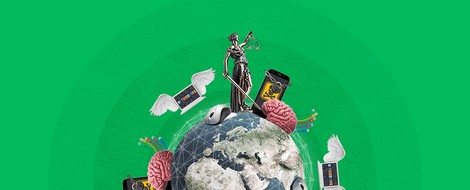Your podcast discovery platform
Curious minds select the most fascinating podcasts from around the world. Discover hand-piqd audio recommendations on your favorite topics.

piqer for: Global finds Technology and society
Prague-based media development worker from Poland with a journalistic background. Previously worked on digital issues in Brussels. Piqs about digital issues, digital rights, data protection, new trends in journalism and anything else that grabs my attention.
Safe And Diverse Workplace? Not In Silicon Valley
The Center for Investigative Reporting has again packaged up some of its top-quality investigative journalism into its radio program and podcast Reveal. On this stimulating episode, host Al Letson talks about "Silicon Valley and the things tech companies don't want you to know about their workplace."
First, you'll hear how the on-site health clinic at Tesla Inc.’s California assembly plant prioritized keeping official injury counts down over occupational injury care and workplace safety. According to current and former Tesla employees, staff were forbidden from calling 911 without permission from the clinic’s doctors, many injured workers were sent to the emergency room with a Lyft ride, to then be pushed back to the production line, instead of assuming lighter duties during their recovery period. All this to make the company’s official injury log required by the state and federal law look better than it actually was.
“You go to Tesla and you think it’s going to be this innovative, great, wonderful place to be, like this kind of futuristic company,” said Anna Watson, a physician assistant who worked at Tesla’s medical clinic. “And I guess it’s just kind of disappointing that that’s our future, basically, where the worker still doesn’t matter.”
Then, Reveal takes a deep dive into the Silicon Valley’s diversity problem. The show explores experiences of women—in particular women of color—who faced discrimination in the hiring process and promotions system in the largest tech companies in the Bay Area. And to illustrate the size of racial and gender disparity, Reveal takes an innovative approach to statistics and engaged a choir that conveyed data with sounds.
"For each data point we wanted to illustrate, we divided our 43 singers—20 male voices and 23 female voices—into proportional groups so the volume and number of voices would match the data," explained Reveal.
